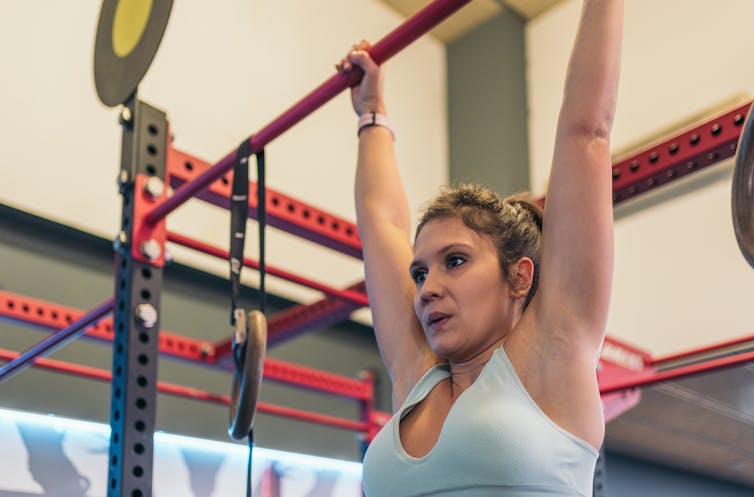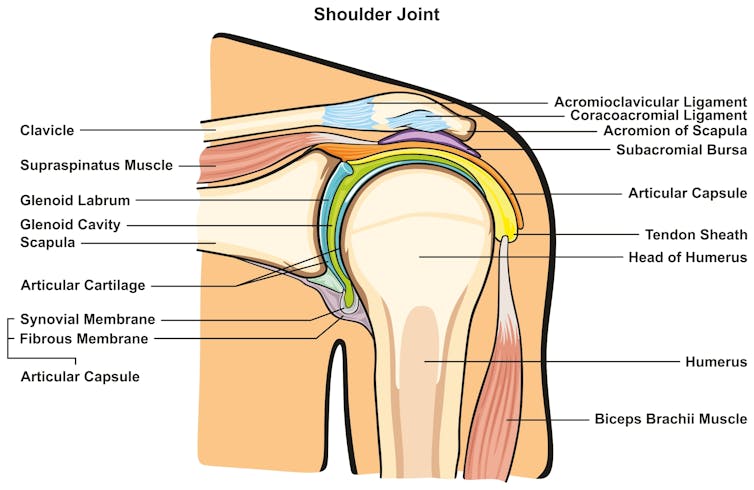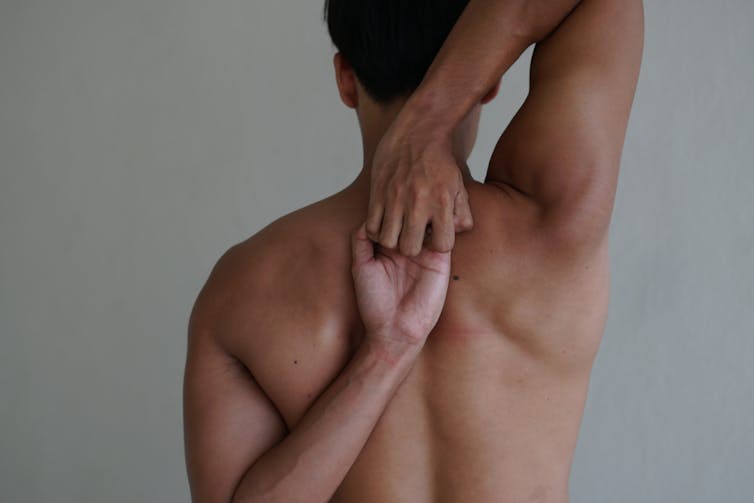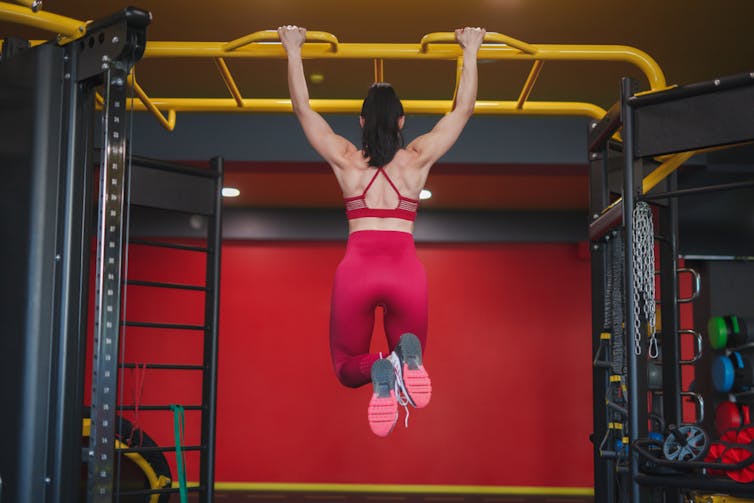Source: The Conversation (Au and NZ) – By Charlotte Ganderton, Senior lecturer (Physiotherapy), Swinburne University of Technology

Shutterstock
You might have seen media articles or fitness influencers online urging people to do “dead hangs”, where one hangs loosely from a bar – usually with feet off the floor. The goal is usually to improve upper-body strength and shoulder stability, or stretch out muscles around the shoulder.
But what does the science say? Are dead hangs good for shoulder health?
As with so many things health and fitness, it’s not an easy “yes” or “no”. It really depends on your reason for doing it, your individual biology, and how you do them. For some, dead hangs may risk musculoskeletal injury.

Shutterstock
The shoulder: a relatively unstable joint
Dead hangs may improve grip strength and endurance in rock climbers. This suggests that if you’re well adapted to this type of exercise and have very good upper-body strength, dead hangs may bring hand and forearm benefits.
But while dead hangs may be OK for people with good upper-body strength and no shoulder problems, they can be risky for others. People with shoulder hypermobility (excessive motion of the shoulder) or shoulder instability (such as those who easily dislocate their shoulder) may need to be cautious.
The shoulder, by design, is a relatively unstable joint. It has a large ball-type bone called a humerus, which sits in a relatively small socket called a glenoid.
The passive (non-muscle) tissue around these bones (the capsule, labrum and ligaments) creates a generous space around the shoulder joint – all so you can move your arm though a large range of motion.
Because there’s not much passive support in the shoulder, it relies heavily on active muscle coordination and strength to keep it stable.
The coordination of muscles around the shoulder blade help keep the socket in the right place, and the rotator cuff and deltoid muscles help to control the “ball” in the centre of the socket as you move.
All this means dead hangs, if not done correctly, could present a risk for people with hypermobility in their shoulders.

Shutterstock
Hypermobility and the shoulder
Some people have excessive motion of their joints due to increased elasticity of joint tissue. This is called hypermobility and may be in the shoulder or all joints.
The overhead arm position of a complete dead hang puts you in a position where, inside your shoulder, the ball is pulled away from the socket. Hanging your entire body weight can, in hypermobile people, cause the tissue to stretch even more.
People with shoulder hypermobility are more likely to develop painful shoulder instability, which is when the ball often pops out of the socket.
Shoulder instability may be caused by acute trauma (such as dislocation). Or it can develop over time from a loss of muscle control, deriving from micro-trauma (by, for example, swimming laps in the pool with hand paddles).
Shoulder instability is associated with reduced strength and coordination in the shoulder muscles. In people under 40, it’s often misdiagnosed as “rotator cuff pain” or “shoulder muscle tightness”.

Shutterstock
What can I do instead of dead hangs?
Dead hangs require good baseline strength, can risk popping the ball from the socket for some people, and can stretch the passive tissue. They are not the best exercise for those for shoulder hypermobility and instability.
So what’s the alternative? A treatment known as the Watson Instability Program has had good results for resolving non-traumatic shoulder instability when compared to a general shoulder strength program.
This program focuses on gaining shoulder blade control (such as the upward rotation you get when you reach up to a high shelf). It involves recruiting the shoulder blade and shoulder joint muscles to improve the contact between the ball and the socket.
Building shoulder blade control and strength can help boost broader shoulder strength.
Still keen to try dead hangs?
If you are determined to do dead hangs, remember to:
-
start with small increments; hang for just ten seconds or fewer at first, and build from there
-
don’t allow yourself to get too fatigued; your shoulder joint can become less stable when it’s tired
-
try stepping off a box under the bar rather than jumping up to the bar
-
keep some “active” tone in your shoulders as you hang; hanging completely passively can come with risk.

Shutterstock
Our team is conducting a trial of the Watson Instability Program. We are investigating brain changes in patients with multidirectional instability of the shoulder.
If you’re female, aged 18-35, have non-traumatic, right-sided shoulder instability and would like to have the chance to receive six months of free Watson Instability Program physiotherapy treatment as part of our study, please contact either of us or read more about the study here.
![]()
Charlotte Ganderton receives funding from Arthritis Australia, Physiotherapy Research Foundation, Swinburne University of Technology, National Institute of Circus Arts and La Trobe University. Charlotte Ganderton is a member of the Australian Physiotherapy Association and Sports Medicine Australia.
Sarah Warby consults and receives research funds from the Melbourne Shoulder Group.
– ref. What are dead hangs? What are the shoulder pain risks and how do I do them safely? – https://theconversation.com/what-are-dead-hangs-what-are-the-shoulder-pain-risks-and-how-do-i-do-them-safely-202346







